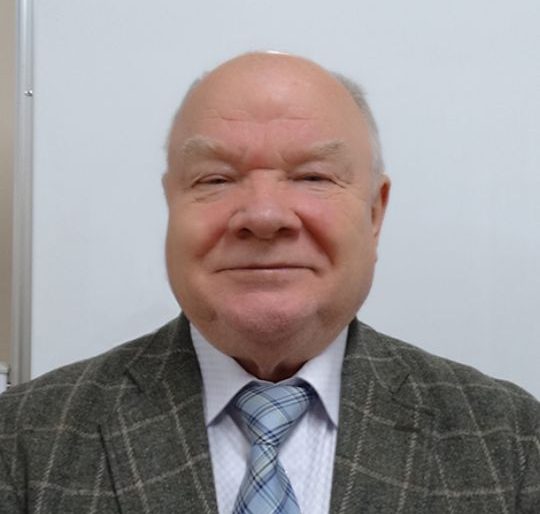
- 所属
- 環境放射能研究所
プロフィール
Ph.D in Chemistry from the Institute of Chemical Physics of Russian Academy of Science (1983) for studies in atmospheric chemistry and Doctor of Science degree in Radiobiology from the Institute of Agricultural Radiology (1998) for studies of radiocesium and radiostrontium behavior in the environment after the Chernobyl accident. My field of expertise is environmental behavior of contaminants including accidentally released radionuclides. Currently, my research focuses on the Fukushima derived radiocesium behavior in soil-water environment and its comparison with Chernobyl and Mayak cases.
研究テーマ
- Mechanisms of radionuclide migration and transformation in soil-water environment;
- Radionuclide transport with surface runoff and rivers;
- Process level modelling of radionuclide fate and transport in the soil-water environment;
分野
Environmental chemistry, Radiochemistry, Radioecology, Fate and transport of contaminants
キーワード
Fukushima, Chernobyl, Radionuclides, Radiocesium, Solid-liquid distribution, Wash-off, River transport
研究概要
I started my scientific career in the field of atmospheric chemistry in upper and middle atmosphere and defended PhD on the subject in 1983. Then I turned to the chemistry of contaminants in soil-water environment. In 1986 immediately after the Chernobyl accident I was involved in emergency response, field and laboratory studies of radionuclide behavior in the soil-water environment, monitoring, process-level modelling and prediction of radionuclides fate and transport. In 1993-94 I studied radionuclide solid-liquid distribution in the laboratories of the US NWNL Battelle on the Hanford Site. In 1995-1999 as Alexander von Humboldt fellow I studied fate and transport of Chernobyl derived radiocesium in Lake Constance and other German lakes and forest. Starting from 1999 to 2012 I was leading the Centre for Environmental Chemistry of SPA “Typhoon”. Besides Chernobyl radionuclides I was involved in many projects and programs on environmental behavior of persistent organic pollutants (POPs) and heavy metals, especially mercury. I tightly collaborated with Arctic Monitoring and Assessment Program in the field of such studies in Russian Arctic.
After the Fukushima accident, my ambition was to do research in Fukushima area to check how well we understand basic mechanisms of radiocesium behavior in the environment. This was realized in 2013 when I started to work for the Institute of Environmental Radioactivity at Fukushima University. Performed researches in 2014-2016 demonstrated that our understanding of r-Cs speciation and migration processes adequately explains differences and similarities in the radionuclide’s behavior in Fukushima, Chernobyl and Mayak areas.
Climate and geographical conditions for Fukushima Prefecture of Japan, Chernobyl’s near-field zone and Mayak area are obviously different. The landscapes and soils also differ significantly. Moreover, the speciation of radiocesium in all three releases were distinct. Comparative analyses have been carried out for r-Cs wash-off parameters and distribution coefficients, Kd, in rivers and surface runoff for the three contaminated areas. The r-Cs distribution coefficient in Fukushima rivers was 1-2 orders of magnitude higher than corresponding values for rivers and surface runoff of Chernobyl and Mayak areas. This is indicative of higher ability of Fukushima soils and sediments to bind r-Cs. The normalized dissolved wash-off coefficients for Fukushima river watersheds are 1-2 orders of magnitude lower than those for Chernobyl and Mayak areas. The effective dispersion coefficients, however, in Fukushima soils were found to be relatively high as compared to Chernobyl and Mayak.
In general, due to higher precipitation, higher temperatures and higher biological activities in soils, self-purification of the environment and natural attenuation in Fukushima is essentially faster than in Chernobyl and Mayak areas.
ひとこと
In general, due to higher precipitation, higher temperatures and higher biological activities in soils, self-purification of the environment and natural attenuation in Fukushima is essentially faster than in Chernobyl and Mayak areas.
好きなもの、趣味
Travels, Enjoying cultural diversity, skiing, swimming and hiking for fun
略歴
- 1977
M.S. in Chemistry, M.V. Lomonosov Moscow State University (Russia)
- 1983
Ph.D. in Chemistry, N.N. Semenov Institute of Chemical Physics, Moscow (Russia)
- 1998
Doctor of Science in Radiobiology, Institute of Agricultural Radiology, Obninsk (Russia)
- 1977-2013
Research scientist, Senior Research Scientist, Head of Laboratory, Head of the Centre for Environmental Chemistry, Principal Research Scientist of RPA “Typhoon”, Obninsk (Russia)
- 1993-1994
Research Fellowship in US NWNL Battelle, Richland, WA (USA)
- 1995-1999
Research fellowship of AvHumboldt Foundation, ravensbourg-Weingarten (Germany)
- 2013-2016
Project Professor of the Institute of Environmental Radioactivity at Fukushima University (Japan)
- 2016-2024
Professor of the Institute of Environmental Radioactivity at Fukushima University (Japan)
受賞歴
- 1980
Young researcher award by the USSR State Committee for Hydrometeorology and Environmental Monitoring for the research on self-ignition of artificial cloud in the upper atmosphere.
- 1981
Young researcher regional award by the Government of Kaluga region, USSR, for the research on the fate of artificial cloud in the upper atmosphere.
- 1986
USSR State Award: “Labor Merit Medal” for participation in emergency response activity after the accident at the Chernobyl nuclear power plant
- 2001
Scientific Excellence Award named after N.V. Timofeev-Resovsky by the Government of Kaluga region, Russia, for the researches on radionuclide behavior in the soil-water environment after the Chernobyl accident.
- 2005
Russian Federation Federal Service for Hydrometeorology and Environmental Monitoring Award “Honorable Meteorologist”
- 2010
Russian Federation Ministry of Natural Resources and Environment Award “Distinguished Environmentalist”
- 2013
Award of Federal Service of Russian Federation for Hydrometeorology and Environmental Monitoring for the best popular-science publication.
